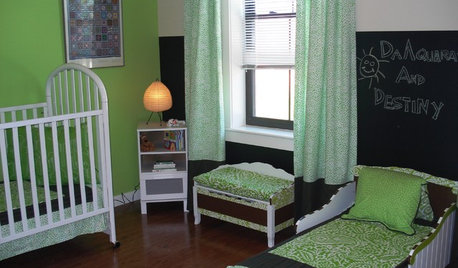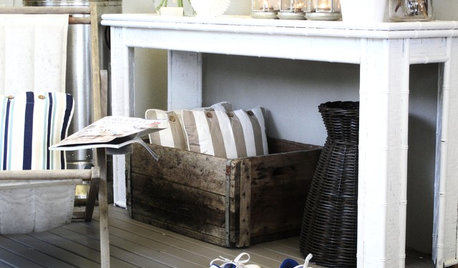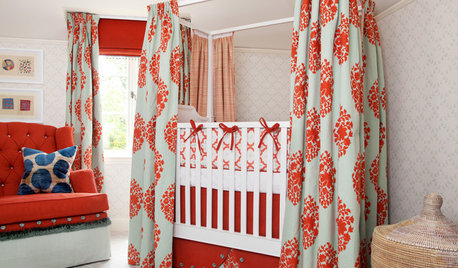This is only a long post because I have to include info from other threads in it to make myself clear:)
I built a bin using Kelly Slocum's plans as follows:
Materials: Opaque plastic bin with lid.
Half-inch drill bit suitable for drilling through plastic.
Enough foam packing peanuts (not the cornstarch variety!) to cover the bin floor 2" deep.
Two pieces of half-inch hardware cloth cut to fit inside the bin.
One piece of landscape fabric (shade cloth) cut to fit between the hardware cloth sheets.
Enough rotted manure, compost or vermicompost to cover the bin floor 4" deep as your initial bedding layer.
Drill half-inch holes two inches apart in the sides of the bin 2" below the upper lip and 1.5" up from the bin floor. These holes ensure sufficient aeration in the bedding. They do not need to be covered to prevent worms escaping or flies from entering the system. There is no way to make a healthy worm bin either contain worms who don't want to be there or prevent other bugs from entering the system, regardless of what you might hear to the contrary, and we neither need nor want to do so anyway. We're creating worm heaven, not worm prison, and the other organisms which will find their way into the bin are beneficial to the process and do not harm plants, animals or people.
Spread the packing peanuts over the bin floor. This peanut layer will create space beneath the bedding in the bin where excess moisture can drain, and creates a space through which oxygen can easily move. Drain rock can be used in place of packing peanuts, but they make the bin very heavy if you decide you want to move it later!
Sandwich the landscape fabric between the two pieces of hardware cloth and lay it on top of the packing peanuts. This hardware cloth acts as a false floor that supports the bedding but through which water and air can pass. The landscape fabric sandwiched between prevents finished vermicompost from filtering down into the peanut layer.
Spread the material for the initial bedding layer over the hardware cloth floor; add your worms and you're good to go!
Feed the system by spreading whatever feedstock you choose in a 1-2" layer over the initial bedding material. Cover the feedstock with an equally thin layer of compost, or shredded brown leaves, paper or cardboard (leaves are my personal favorite), which we'll call working bedding. Each time you feed, cover the feedstock with your choice of working bedding material. The working bedding balances the relatively high nitrogen in the feedstock with a rich source of carbon, ensuring good microbial activity in the system. Because it's a bulky material it helps to maintain space for oxygen movement through the bedding and because it tends to hold moisture well it helps to maintain a relatively constant moisture level. If the feedstock you're using is rather dry then the working bedding should be dampened before being added to the bin. If the feedstock is wet then the working bedding does not need to be moistened, but will absorb the moisture released by the feedstock as it breaks down.
How often to feed the system will depend on the worms. The next addition of food should be made when the worms are actively working in the previously added feed stock layer. The layer does not have to be gone, the worms just have to be working in it. As the system becomes more mature the amount of material you'll be able to feed will increase. Initially you may find that you can make only one or two additions of feedstock per week. In a fully charged, mature system it's not unusual to find you're able to feed it the same volume of material daily.
When the bin is filled to the top it's time to harvest. Once the worms have moved into the last feed stock addition, remove the top six inches of material from the system and set it aside. The vast majority of your worms will likely be in this material. The remaining vermicompost is then removed from the bin for use in the garden. The worm rich material you set aside goes into the bottom of the now empty bin, right on top of the hardware cloth layer just as you did with the initial bedding when you first started the bin. Feedstock is spread in a thin layer over the top of it and covered with working bedding. Thus, the system begins again!
The total cash outlay for a system like this is less than $15. Once you've gotten a taste of what home vermicomposting is like and determined it's a project you'd like to make a regular part of your home recycling regimen you can look into the more expensive units. Some of the commercial units do have bona fide advantages over home made units, but it's best to know the project is one you're going to want to continue before plunking down your hard earned cash!
For those who prefer to purchase a commercial unit right away, look at the bin reviews provided by Worm Digest and consider which concept most appeals to you. The worms don't care which bin you put them in provided their particular needs are met. Youll simply need to decide which concept you feel most comfortable working with.
Good luck! Kelly Slocum
The only changes I made were that I used some up-side-down rectangluar baskets I bought at the dollar store as support for my flase floor. I would like to make a suggestion though for those using packing peanuts-Put them in a mesh type laundry bag or even an old pillow case, then when you dump to harvest there is no problem with a bunch of loose peanuts.
To be honest I made other changes but then saw the picture of what "hardware cloth" really was(square metal mesh) and plan on re-doing my bin yet again. If you remember I changed my old flase floor(a screen and old t-shirt on top of the up side down baskets) to some cardboard sheets and now they have compressed too much(not been eaten as I thought last week) and I feel my bin is too deep. I plan on changing back to a false floor with real hardware cloth closer to Kelly's instructions. To make this easier once the time comes(late May) I've moved all my working bedding and most of the food I could scrape up on top of some screening> Along the same idea as the screen harvest method Kelly outlines Here:
Once the bedding in your bin has been processed and is no longer recognizable, and the volume of the bin has decreased by about half, it's time to harvest. Cut a piece of fiberglass window screen so that it is several inches larger than the surface area of your bin. Set this screen down on the bedding, laying the excess length flat against the inner bin walls. Fill the bin on top of this screen with the dampened bedding material of your choice and feed into this new bedding as you normally do into this new bedding.
Young worms beneath the screen, sensing the food above, will begin to squeeze through to feed and process your new OM addition. Larger mature worms that will have to work to squeeze through the mesh will prefer to remain below the screen until they have processed pretty much all of the OM there. Eventually there will be greater nutritional resources above the screen than below and the adults will squeeze through the tiny mesh. Many people find it hard to believe a worm can squeeze through a window screen, but the little buggers can squeeze through panty hose and even woven landscape shade cloth! Window screen is no barrier!
While the worms are doing their thing, you will simply be feeding into the bedding on top of the screen. Once the stuff on top of that mesh is ready for harvest, indicated by the bedding no longer being recognizable and the volume of material above the screen decreasing by roughly half, grab the excess length of screen agains the bin walls and lift this newly processed material out of the bin and set aside. Virtually all of your worms will by now be in this material. Dump the finished worm castings from the bottom of the bin, put the newly processed material containing yoru worms from on top of the screen into the now empty bin, and place the screen on top of this stuff, pressing the excess length against the inner bin walls, as you did before. Dampen the bedding material of your choice, and place on top of the screen, once again filling the bin to the top. Feed into this new bedding as you did before. When the material on top of the screen is ready for harvest, repeat this process.
This is the easiest and most efficient harvesting method I have ever used in a home worm bin. It is most effective in bins that are at least 18 inches deep however.
I'm hoping it will make the change over easier and future harvests simple. I just wanted to share the linking of these ideas and hope they will help others as they have helped me.
Thanks Kelly!!!
Cass:)













boreal_wormer
ogsteacher
Related Discussions
Thanks EVERYONE... long post warning
Q
Creative heating solutions/installation ideas wanted (long)
Q
warning: expressdecor.com *long rant
Q
Long MIA - Warning long post
Q
CassblondeOriginal Author